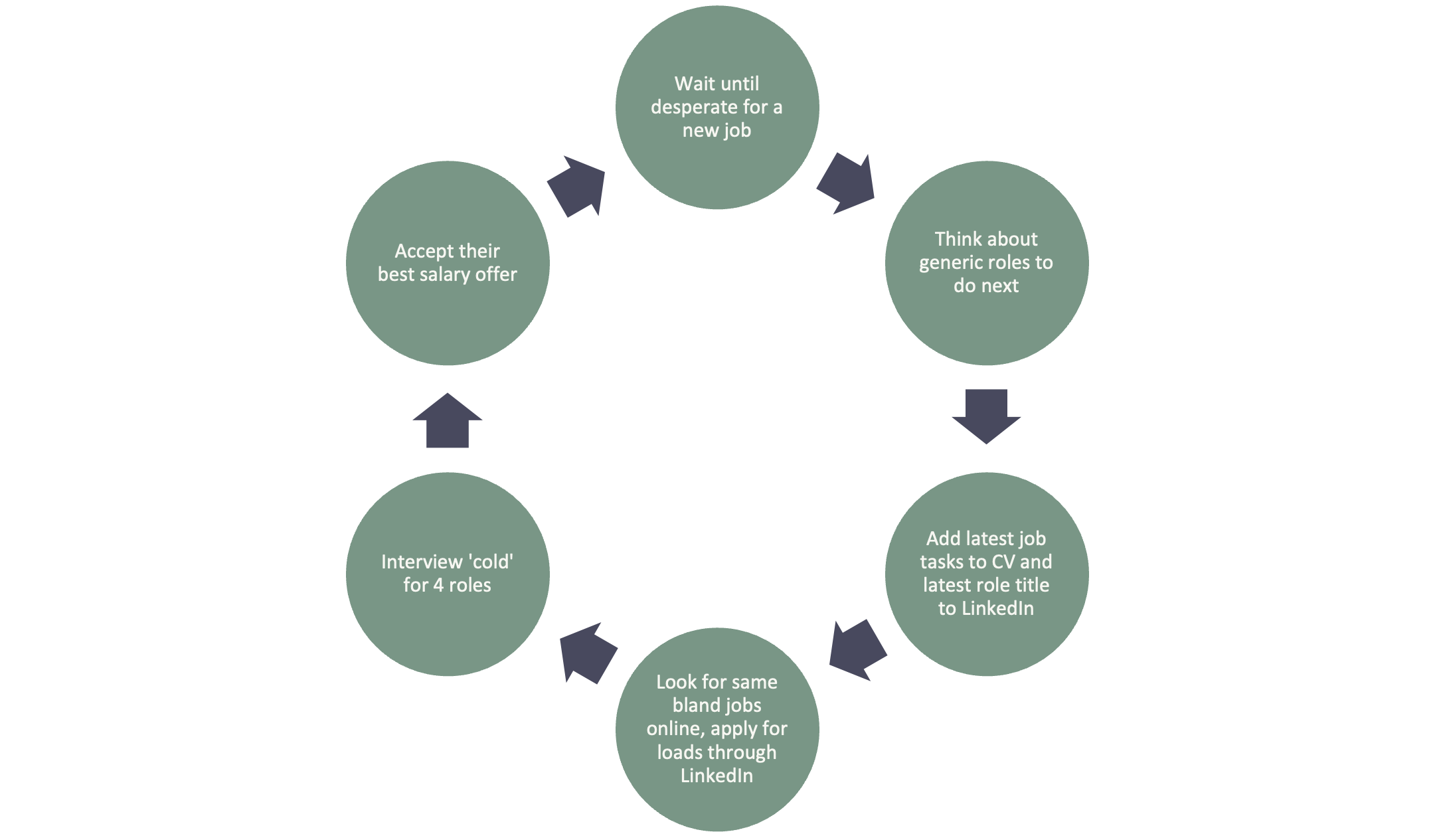The first quarter of a calendar year is a time when many people reflect on their jobs, what they’re doing, where they are, and whether it’s time for a change.
In 2021, there was a phenomenal amount of movement in the job marketplace, with a post-Covid shuffle opening up jobs left, right, and centre. But the problem was that the supply was nowhere close to meeting the demand. A combination of job uncertainty, employer loyalty and financial instability meant that most people were staying put. At least for the time being.
But over the last couple of months, the roles have flipped. A lot of people have started to think “I don’t like where I work”, “the culture is not great”, “I worked really hard and I’m not seeing the outcomes of this”. This has led to what is being called ‘the great resignation’.
So if you’ve been thinking of moving, shaking up your career a little, or just feel like taking part in the ‘great resignation’, you’ll need a plan. Here are a few tips that might help.
How most people look for a new job
This, in my eyes, is the process that most people take when they’re looking for a new job – it looks a little something like this.

Looks familiar, right? But this is just a recipe for job dissatisfaction. What if I told you there was a better way? Well there is. I call it my ‘10 steps to get the job you love’.
Step 1: Start your job hunting the right way
All job changes start with a little job-hunting, but finding that dream job can be an extremely difficult process. Luckily, you’ve already ticked this step off (or at least you will have by the time you’ve finished this article 😊).
Step 2: Understand the future of your industry
There’s no point in applying for a job that will be extinct in a few years’ time. So you really need to be clued up on what’s to come if you want to secure a stable role.
Now, the future of finance will be a vastly different landscape to the current one, with many of today’s roles no longer existing. To understand what this means, do some research on the roles that will be big in 10 or 20 years down the line.
In finance this will be things like machine learning, data science and visualisation, finance transformation and business partnering. You can find out more about this by reading my blog on preparing for the future of finance.
Step 3: Understand your USP and your personal brand
Think about the people high up in your organisation. They probably have one ‘thing’ that makes them special, something that people come to them for advice on, or something that they are known for.
Now think about yourself. What are the problems you solve? What makes you stand out from your peers? These strengths should become your brand, and this is what you should leverage when you’re looking for your next job.
Step 4: Showcase your personal brand and value
Now you’ve figured out your brand, the next step is to make sure that your CV and LinkedIn reflects this. First of all, your CV needs to scream your brand at the people reading it, so that everybody understands what you’re all about. And second, they can see the value you can add to their team and business.
A big caveat here though, you’ve got to make sure you back up all the things that your CV says when you get to interview. When you meet the interviewers, you want them to be amazed by how much you match (or exceed) what is on paper. That’s how you make a great impression!
Step 5: Figure out your ideal role and company
The goal here is to figure out, in a perfect world, what would your ideal job description be? Write down a brief job description that would make you absolutely fall in love with a role. Things that you loved about a previous role? Write them in. Things you’d love to do? Write them in.
The chances are, unless you’re incredibly lucky, you won’t find that 100% perfect, ticks every box, no red flags job. But what you can do is weigh every role that you look at against that list, and assess from there how many boxes it ticks.
When it comes to figuring out your ‘dream company’, it’s a little more difficult. The main problem is, 90% of people think companies like Apple, Google, Tesla or Microsoft are their dream employer.
Now, I’m not telling you not to think that way. If that’s where you want to work, then great, go chase that job! But there are lots of other ways to identify your ‘ideal’ company. Start by thinking about your values, interests and strengths, and see which companies match up to those.
Step 6: Use this proven methodology to seek out your ideal role at your ideal company
I’m going to let you in on a secret hack that can help you massively increase your chances of landing your dream job… If you know the hiring manager of the job that you’re going to interview at, you are 16 times more likely to get the role.
I always get asked “How would you even go about that?”, “I can’t just pop up in front of the hiring manager and introduce myself” and my answer is, no you can’t. But there are some tried and tested ways to go about this. Tactics used by top performers to gain this advantage – I observed top performers doing it at Microsoft all the time.
Now, I can’t give all my secrets away for free, or else I wouldn’t have a job! So if you want to know more about this, then come and work with me.
Step 7: Beat the odds
Statistically, only 2% of job applicants are invited for an interview. That sounds scary, but if you’ve followed the process up to this point, you’ll already be far, far more likely to secure that interview. And many of my clients who do follow the process – are invited to interview, often as their first-choice candidate.
Now you just have to ace it!
Step 8: Interview like a top performer
If you want to interview like a top performer, there’s one key thing to keep in mind. Most people prepare for interviews by preparing the same, boring, standard answers.
Top performers research into the problems that the company, department or hiring manager have, and then talk about the problems in the interview, and how they are ideally placed to solve them. Again, if you want to know the methodology top performers use to figure this out, come and talk to me.
Step 9: Negotiate your worth
The hard part is over, you’ve prepared for, applied for, interviewed for, and (hopefully) been offered your dream job. But there’s one final step, and that’s to negotiate your worth.
Now, you might be thinking that the salary you’re being offered is satisfactory… but it could be better! People always assume that the salary they’re offered is the one that they’ll get, but there are lots of ways that you could negotiate this.
This is something I work with my clients to achieve. There are a certain set of compensation variables that you can take into account. And on average, the offer my clients accept is 11% better than the one that they were initially offered.
10: Love your job
This is the real easy one. Now you can start your dream career, happy in the knowledge that you’ve earned it. And if you ever change your mind, just go through the process again! (It’ll be a lot easier the second time around).
Like the sound of this?
Book a free 30 minute consultation session with me today and we can talk about your dream job and how to land it.


